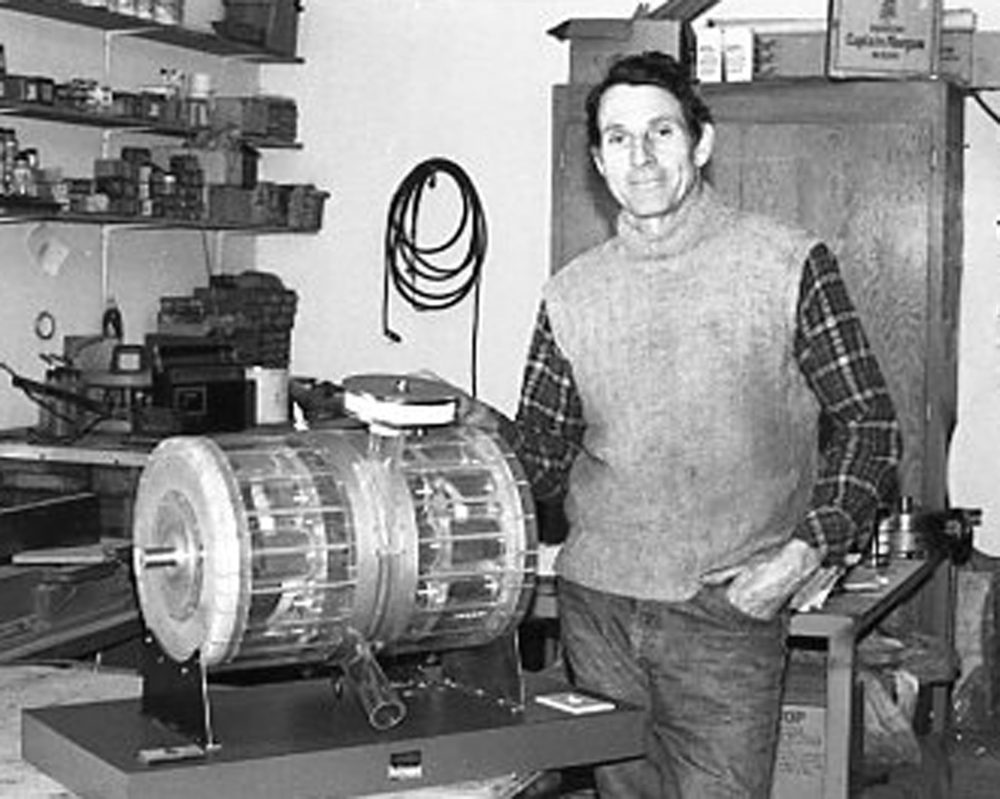COLUMN: Carillon Flashback, April 8, 1981 – Tansley of Tourond builds model of K-Cycle engine
Advertisement
Hey there, time traveller!
This article was published 18/03/2024 (489 days ago), so information in it may no longer be current.
Mike Tansley of Tourond seems to be able to construct almost anything, and recently, one of his greatest challenges was building a working plastic model of the the prototype of the revolutionary K-Cycle engine.
After spending 26 years in the aerospace industry, 16 years in England and 10 years with Bristol Aerospace of Winnipeg, Tansley left the industry in 1976 and moved “back to the land”, halfway between New Bothwell and Kleefeld.
Mike and his wife Valerie renovated a 1924-vintage building and he built his own machine shop, where he does welding of all types, milling, lathe work and sheet metal work, including construction of forming tools for Boeing of Canada and Misty River Marine of Blumenort.

In 1977, Hoken Kristiansen of Kristiansen Cycle Engines of Winnipeg, asked Tansley to construct a working model of a prototype of the Mark I K-Cycle engine he had designed and developed. Some of Kristiansen’s staff knew Tansley and suggested he would be the man to construct a working model of the new engine for demonstration purposes.
The K-Cycle engine promises, when fully developed, to produce the same horsepower using one-third less fuel than a conventional piston engine. It would be two-thirds the size and weight of a standard automotive engine, produce less noise and fewer pollutants, contain a simplified ignition system, run quietly and would be relatively vibration-free.
The company wanted a working model made of clear plastic so people could see the moving parts of the 150-horsepower engine in operation.
Using the blueprints of the original Mark I prototype, Tansley set to work.
“It was a wonderful challenge and I enjoyed every moment of it.”
While Tansley was in the process of building the model, a Montreal advertising crew came to Winnipeg to film the engine in operation. K-Cycle called Tansley and asked for half the model to be attached to half of the actual engine, so the crew could film the working parts in operation through the plastic.
Tansley had to think of a way to replace the plastic cam–shaft as the cam design was very critical. He machined a chunk of hardwood into a wooden cam and painted it.
“They mated the two engine halves together and the film crew was thrilled with the fact that it worked. Everyone was amazed that it worked so well.”
The wooden cam ran for the film crew and nobody knew the difference. When Kristiansen was told, he laughed and thought it quite hilarious. Tansley eventually made a plastic one and replaced it in the model.
The Mark I K-Cycle engine became obsolete before it ever had a chance to drive a car and was immediately followed by the greatly improved Mark II and III.
The initial goal of the company was to have a fully designed engine in production by 1983. Tansley said he saw many problems in developing a new concept for an engine like this. A great deal of money is necessary to carry out design and development work before and engine becomes commercially viable, he said.
“When they build an engine, often theory and practice don’t go together,” explains Tansley. “It takes a lot of time to get the actual engine built.”
The company currently has one engine that has driven a car and others that are going through further development at testing facilities.
– with files from Moira Neufeld
